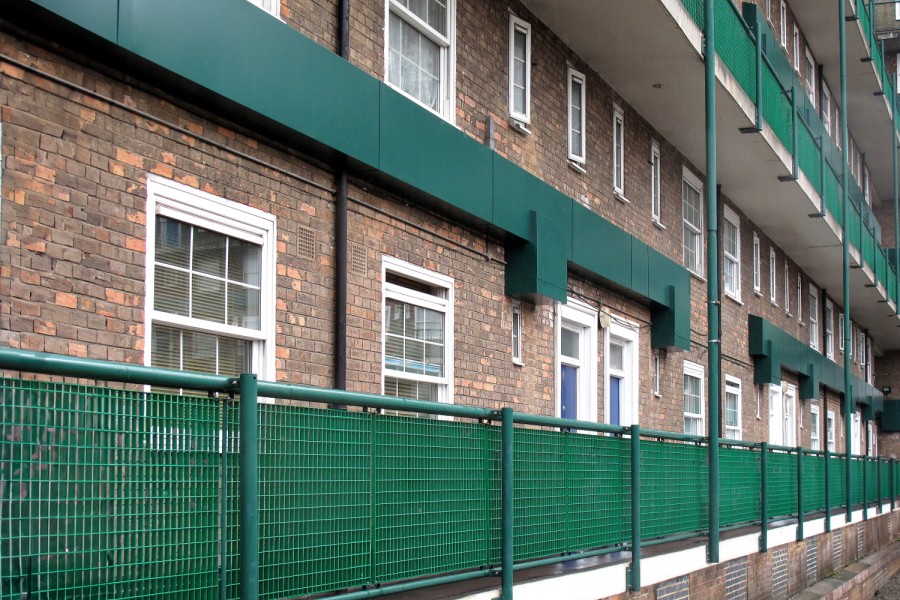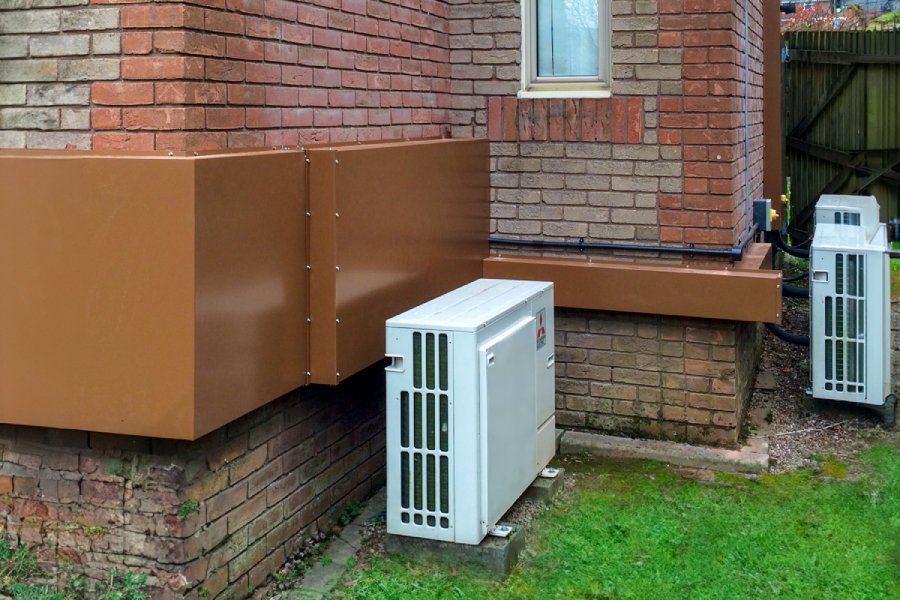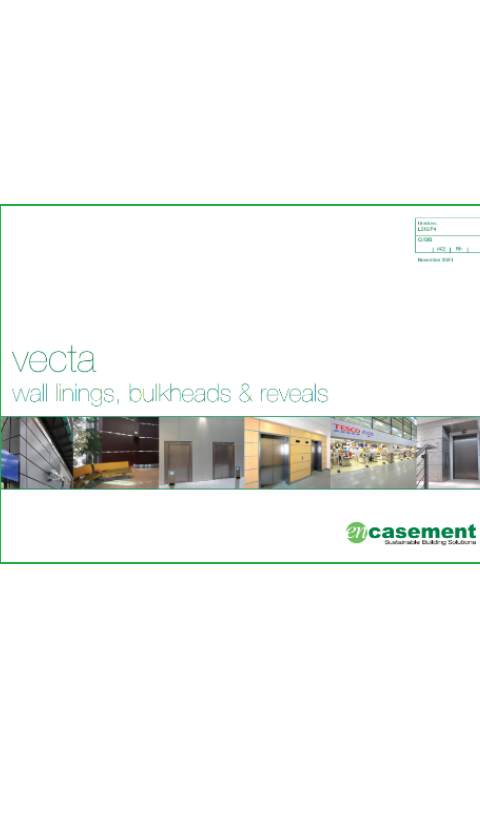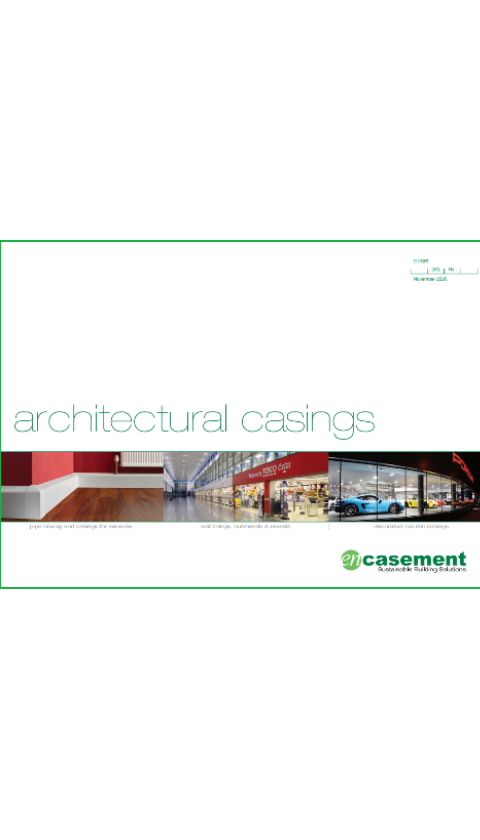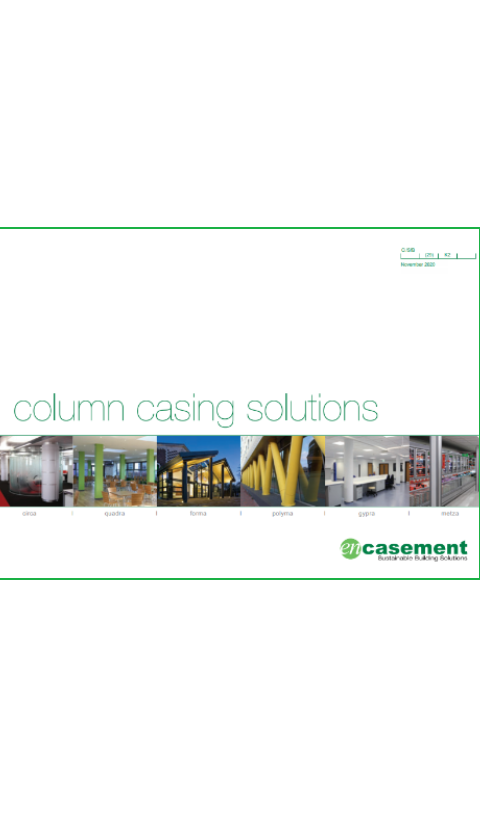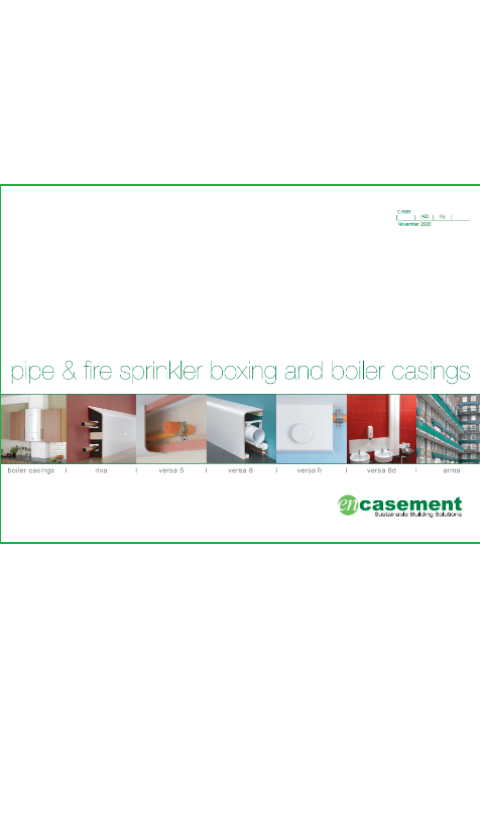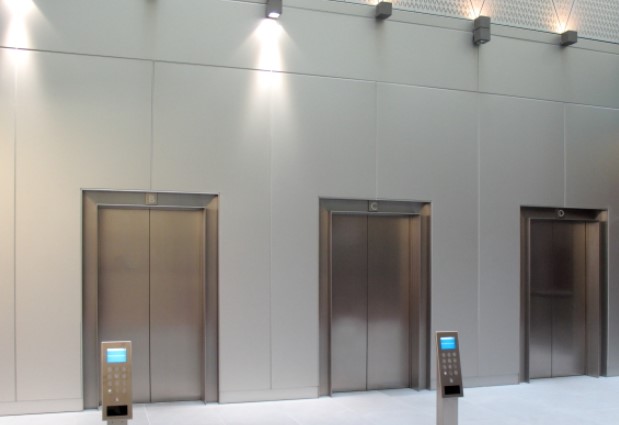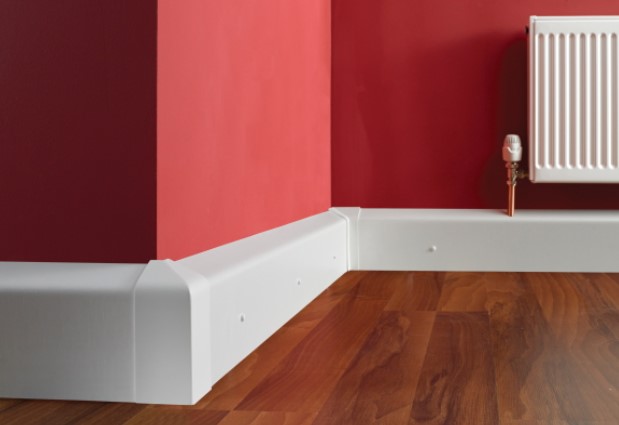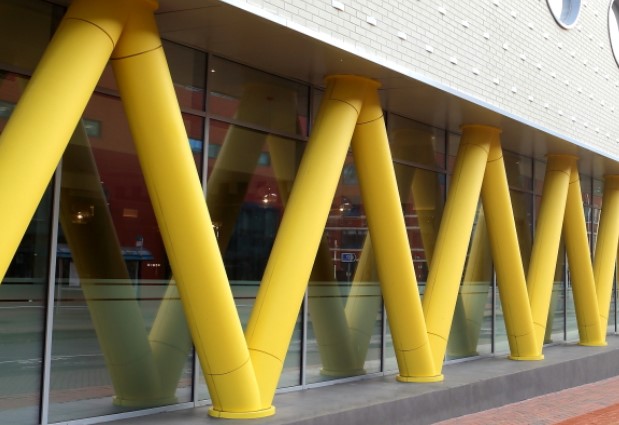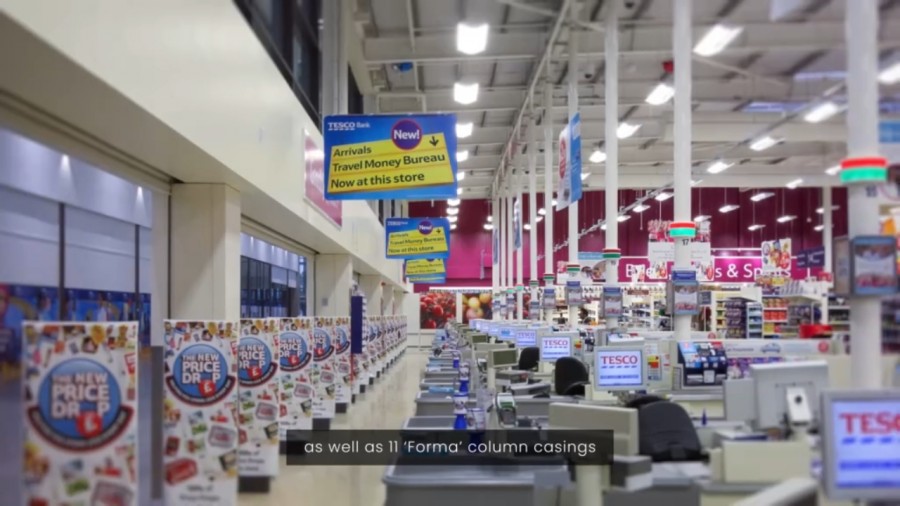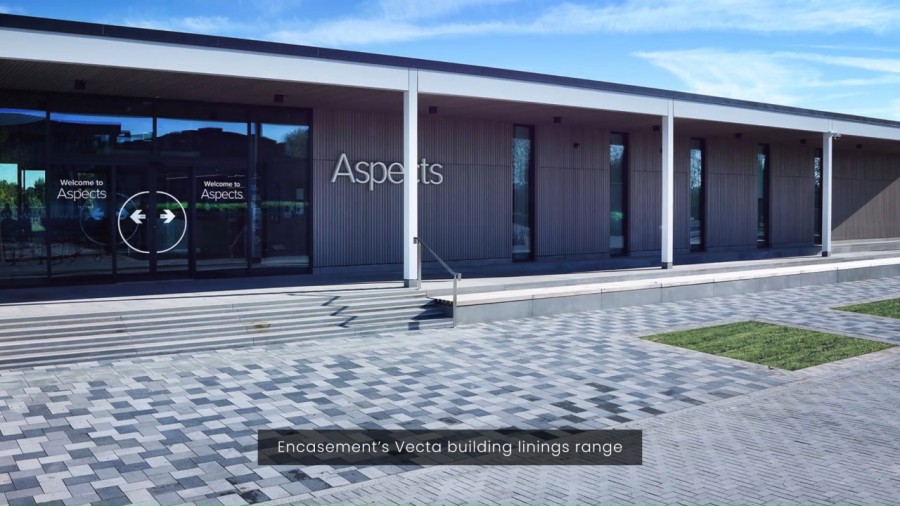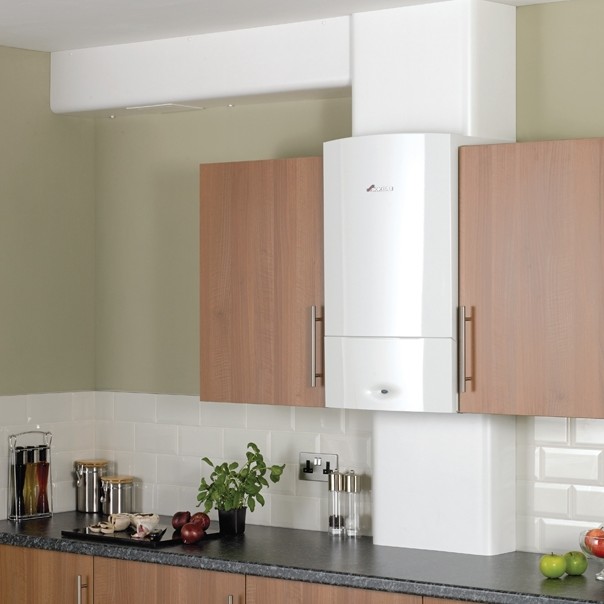
With the potential for local authorities and housing associations to save tens of thousands of pounds, just by changing the way heating system and boiler pipework are concealed on site. Martin Taylor, Managing Director of Encasement Ltd, provides a detailed insight on where and how the cost can be removed from the process.
In any property, whether it's a new build or a refurbishment project, there will inevitably be some exposed pipework that will need covering for reasons of safety, in the case of hot pipes, or purely aesthetics.
However, for local authorities (LA) and housing associations (HA), where they primarily deal with older housing stock, which requires upgrading and annual maintenance, the high volumes of exposed pipework for heating systems, boilers, gas, mains water and waste can present a number of challenges.
Usually, due to the age of the properties and the nature of their construction, which predominantly uses concrete and brick, mechanical and electrical services need to be surface mounted, as they can't easily be concealed during installation.
Given that upgrading heating systems with more energy efficient solutions in older social housing  stock is important to reduce emissions and energy consumption, while improving comfort for occupants, there is also a need to ensure that the updated system is safe and looks good too.
stock is important to reduce emissions and energy consumption, while improving comfort for occupants, there is also a need to ensure that the updated system is safe and looks good too.
And it's at this point where LAs and HAs have the opportunity of either saving or wasting thousands of pounds on their annual repair, maintenance and improvement (RMI) budget, just by deciding which method to use when boxing in heating system and boiler pipework after installation.
Suffering from exposure
So how exactly can something as simple as covering exposed pipe work with pipe boxing and boiler casings have such a potentially dramatic impact on RMI budgets?
Essentially, this can be broken down into four sections:
• Manufacture - How will the boxing be made?
• Materials - What materials will be used to make the boxing?
• Methods - How will the boxing be installed and secured?
• Maintenance - How easily can the boxing be removed & replaced for servicing?
Clearly, in each of the above processes, if costs can be removed or if time can be saved, then they will have a positive effect on reducing the overall budget required to achieve the end result.
At Encasement, our approach to product design has always been to develop more cost effective solutions that can save time and money on site, although in recent years, we've also taken a more holistic view, as it became clear that often, the installation processes for traditional boxing can also be time consuming and inevitably costly.
Furthermore, when maintenance, servicing or routine boiler inspections are required, this can also incur further costs as the boxing needs replacing or re-manufacturing after it has been removed. This issue has again influenced our thinking to develop a better and more cost effective solution.
To get a better understanding of each element, let's explore them in a little more detail.
Manufacture
The traditional and still widely used approach for concealing pipework, is for boxing to be fabricated on site using wood or MDF together with nails, screws or adhesive, followed by a couple of coats of paint. Inevitably, this is a time intensive and costly solution, as escalating materials cost and labour rates are constantly increasing the overall cost of manufacture for each piece of boxing.
In 2011, we initiated an ongoing study to quantify how much it costs to make a typical boiler pipework casing and the cost five years ago was £38. Today, this figure can regularly exceed £50, which seems excessive just to cover up some pipes. Also, there are issues with inconsistency of paint finish and fabrication quality, which can easily detract from an otherwise professional heating system installation.
The Encasement solution is, unsurprisingly, a whole lot simpler, quicker and delivers a cost saving of around £20 on every casing installed, as it is manufactured from pre-formed plywood to exact boiler dimensions. They are also pre-finished with durable melamine or laminate, so there's no painting required, which provides a consistent finish and saves even more time.
While a £20 cost reduction on its own is a decent saving, it makes even more financial sense when you consider that the savings reach £10,000 for every 500 properties where pre-formed casings are used.
Materials
Often the materials used to manufacture pipe boxing and boiler casings aren't a major consideration, particularly for on-site fabrication, yet they should be.
Apart from the health & safety considerations when cutting and fabricating MDF, there's also the question of compliance with sustainable procurement policies that many local authorities and public sector bodies now have in place.
Has that piece of timber being cut, been sourced from sustainable forests? Has it been purchased in accordance with the EU Timber Regulations for illegal supply? Can the approval certification be easily accessed?
To meet this growing requirement, Encasement has already addressed the issue, as we are the UK's only manufacturer and supplier of pre-formed plywood boxing and casings that holds an FSC® 'Chain of Custody' certification from the Forest Stewardship Council.
Only FSC® certified timber is used in the manufacture of our boxing and boiler casings. In addition, every order despatched is accompanied with our FSC® certification, which means that the issue of compliance is automatically taken care of for users of our products. Also, as we supply so much FSC® boxing, we can purchase cost effectively, so there's no price premium for using FSC® compliant products.
Methods
Clearly, the choice of 'Manufacture' and Material' have a direct impact on the 'Method' of installation and again this is an area where the use of site made boxing and boiler casings has a negative cost implication compared to pre-formed solutions.
Typically, once a plumber or heating engineer has completed a boiler installation, they will move on to the next flat while a joiner will set about the fabrication and fitting of a wood or MDF 'site-made' casing. Obviously, due to the different skills required, two different people are required to complete the job, which takes time, as mentioned earlier.
If, however, a pre-formed boiler casing is used, which has already been supplied to the correct dimensions, which only requires on-site trimming to height, then there's no need for fabrication and the freestanding casing just slides into place underneath the boiler, which can be done by the heating engineer.
Also, the use of moulded rubber edge strips on the base of the casing means that it removes the need for mastic sealant, which save even more time and money, while also having an influence on the final category - 'Maintenance'.
Maintenance
The 'whole life' costs for site made casings escalate significantly, when routine maintenance visits are factored in to the equation.
In the majority of cases, site made casings are damaged or destroyed during their removal, as the screw heads are filled and painted over, making them impossible or extremely time consuming to dismantle, while mastic sealant around the edges also needs to be removed.
As pre-formed casings are self-supporting and have no screws to hold them together, they can be easily removed and replaced in just a matter of seconds, dramatically decreasing the time that maintenance engineers need to be on site, with a corresponding reduction in associated cost.
Also, the complexities of managing routine maintenance and inspection increases when site made casings are used. In some cases a joiner is required to remove site made boxing in advance of the maintenance work being carried out by a service engineer. The joiner then has to revisit the property after the maintenance is complete to refit the casing or construct a new one.
Case closed!
Apart from the disruption for the tenant and the extended time period to complete a simple process, the cost associated with transport and labour for three site visits by skilled staff are considerable. Alongside this, the task of scheduling and co-ordinating such an operation on multiple properties is extremely complex.
As a result it's a 'no-contest' when assessing pre-formed boiler pipe casings against site made alternatives. The comparative fitting costs alone should ensure that the decision to use pre-formed casings is an easy one to make. Yet, when the FSC® compliance and maintenance aspects are factored in too, it becomes, to quote one of our customers, '…a no-brainer.'







 stock is important to reduce emissions and energy consumption, while improving comfort for occupants, there is also a need to ensure that the updated system is safe and looks good too.
stock is important to reduce emissions and energy consumption, while improving comfort for occupants, there is also a need to ensure that the updated system is safe and looks good too.

